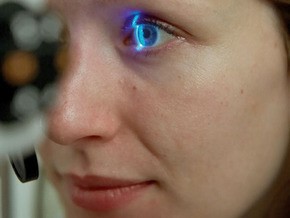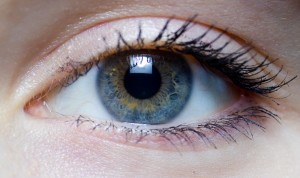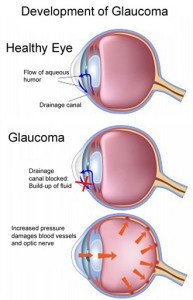Things to Know about Glaucoma

Glaucoma is a name given to a group of eye diseases. They tend to cause progressive damage of the optic nerve, specifically at the point where the nerve leaves the eye to carry visual information to the brain. Here are some facts to help you learn about and understand Glaucoma:

– If it is left untreated, most kinds of glaucoma tend to progress towards worsening visual damage and may also lead to blindness.
– Once glaucoma occurs and visual damage takes place, it is mostly irreversible. This is why glaucoma has been described as the “silent blinding disease” or the “sneak thief of sight”.
– Glaucoma is the second most common cause of blindness worldwide. It is estimated that 4.5 million people over the world are blind due to glaucoma and that this number will rise to 11.2 million by 2020.
– There are several types of glaucoma. Some kinds of glaucoma may occur as a complication of other visual disorders such as the so-called “secondary” glaucoma. But a vast majority of glaucoma cases are “primary,” i.e., that they occur without a known cause.
– It was once believed that the cause of most or all glaucoma was high pressure within the eye, known as intraocular pressure – sometimes abbreviated as IOP. It is established that even people without an abnormally high IOP may suffer from glaucoma. Intraocular pressure is considered as a “Risk Factor” for glaucoma together with other factors such as racial ancestry, family history, high myopia and age.
– Some forms of glaucoma may occur at birth or during infancy and childhood. In most cases, glaucoma appears after the forties, and its frequency increases with age. There is no clearly established difference in glaucoma incidence between men and women.
– The most common types of adult-onset glaucoma are Primary Open Angle Glaucoma (POAG) and Angle-Closure Glaucoma (ACG).
– Angle-Closure Glaucoma is often chronic, like POAG, but can sometimes be acute, in which case it usually presents as a very painful ocular condition leading to rapid vision loss.
– There is no cure for glaucoma as yet, and vision loss is irreversible. Medication or surgery (traditional or laser) can halt or slow-down any further vision loss. Early detection is essential to limiting visual impairment and preventing progressive degeneration towards severe visual handicap or blindness.
References:
http://www.wgweek.net/
http://www.glaucoma.org.au
www.glaucoma.org/
www.allaboutvision.com
Picture Courtesy:
glaucoma.org
wgweek.net
waeyecare.com/
wikimedia.org
www.wgweek.ne


